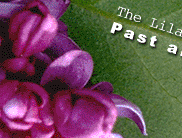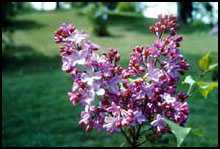





 | ||||||||
|
||||||||
 | ||||||||
| Fragrant and early blooming, Hyacinthiflora lilacs were created by Victor Lemoine. He crossed a double-flowered mutated form of the common lilac with an early-blooming Chinese species. The flowers of the resulting hybrids resembled tiny hyacinths, and so Lemoine named them Syringa x Hyacinthiflora. | ||||||||||||||||||
|
Two lilacs from one The Chinese lilac has two subspecies — Syringa oblata ssp. oblata (formerly ssp. giraldii) and S. oblata ssp. dilatata. As a result, there are two distinct "looks" to Hyacinthiflora lilacs, depending on the cultivar’s ancestry. Most consider ssp. dilatata cultivars as better garden plants — they are shorter and fuller, with hardier buds and flowers. Though initially all Hyacinthifloras were double, Émile Lemoine introduced a new race that included singles in 1911. These arose by crossing ssp. oblata lilacs with more improved cultivars of the common lilac. 'Turgot' and 'Esther Staley' are later examples of these crosses. |
A Labour of love The hybridizing work was difficult, with the deformed double florets of Syringa vulgaris 'Azurea Plena' being crossed with pollen from the Chinese lilac S. oblata. Though very few seeds resulted, the first offspring finally flowered in 1876 and was named 'Hyacinthiflora Plena'. Along with the first hybridized Double French lilac, this plant took the world by storm at the 1878 Paris World Exposition. Reflecting their maternal (S. oblata) heritage, most Hyacinthifloras have bronze-tinted leaves and bloom early, about 10 days before the common lilac. |
|||||||||||||||||
|
||||||||||||||||||
 Introduction
Introduction